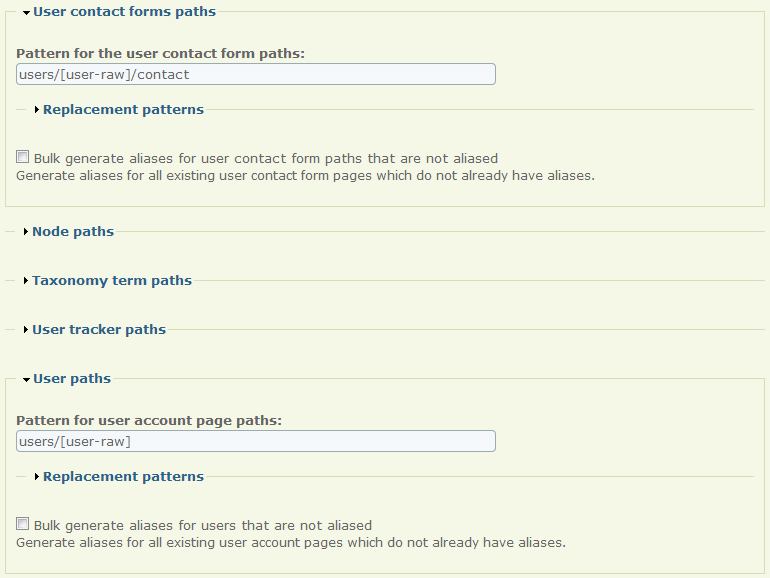I’ve been working with Drupal for the last year in my current position (as University Web & Mobile Systems Librarian at the City University of New York) and I have a love-hate relationship with it. I appreciate its power and agility but curse its complexity, especially for the lay end-user. The biggest project thus far has been moving the department’s support site from Drupal 6 to the newest version of Drupal 7. There’s no easy way to accomplish this so I’ve been doing it manually, using Node Export and Feeds to move data from one instance to the other. It’s been tedious work but manageable since it’s a small site.
One of the biggest Y U NO WORK!? moments was trying to figure out why users’ personal contact forms were not conforming to the friendly URL pattern I’d set up with Pathauto:

No matter what I did, the users’ contact forms were always located at user/[uid]/contact (and not at the desired users/[user:name]/contact). The thing that confused me the most, though, was that this wasn’t a problem in our current D6 instance and that’s because Pathauto 6.x-1.6 contains a separate field for user contact forms paths:

Frustratingly, there’s no such field in Pathauto 7.x-1.2.
…There is, however, Sub-pathauto— a totally separate module that does exactly what it sounds like. It creates sub-path URL aliases for patterns created with Pathauto. I installed it* as soon as I learned about its existence:
$ drush dl subpathauto
$ drush en -y subpathauto
$ drush cc allAnd, presto! Users’ personal contact forms are now at the desired users/[user:name]/contact location. (However, they are also at the previous—and undesired—user/[uid]/contact location so be sure to install Redirect to remove the duplicated URLs.)
Now why didn’t Pathauto for D7 come standard with this functionality?
* Drush is seriously awesome.